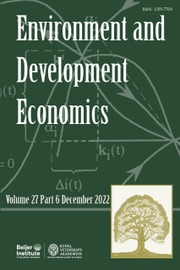No CrossRef data available.
Article contents
Does the Porter hypothesis hold in China? evidence from the “2+26” regional air pollution treatment policy
Published online by Cambridge University Press: 29 April 2024
Abstract
This study analyzed the impact of environmental regulation, specifically the “2+26” regional strategy for air quality improvement, on corporate research and development (R&D) investment in China. We developed a theoretical model based on the argument that R&D investment rises with regulation intensity. Using 2010–2019 data from China's listed companies located in the Beijing-Tianjin-Hebei region and its surrounding areas, we treated the $2+26$ policy as a quasi-natural experiment and adopted a difference-in-differences approach to explore its effect on firm R&D input. A positive association was observed between firm R&D intensity and the $2+26$
policy as a quasi-natural experiment and adopted a difference-in-differences approach to explore its effect on firm R&D input. A positive association was observed between firm R&D intensity and the $2+26$ strategy's implementation in major polluting industries. Our results provide in-depth insights into the $2+26$
strategy's implementation in major polluting industries. Our results provide in-depth insights into the $2+26$ strategy's economic consequences, which are potentially of interest to both scholars and policymakers.
strategy's economic consequences, which are potentially of interest to both scholars and policymakers.
Keywords
- Type
- Research Article
- Information
- Copyright
- Copyright © The Author(s), 2024. Published by Cambridge University Press


